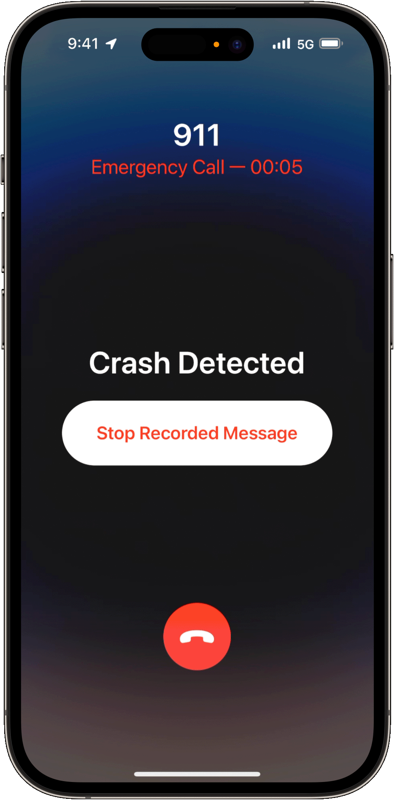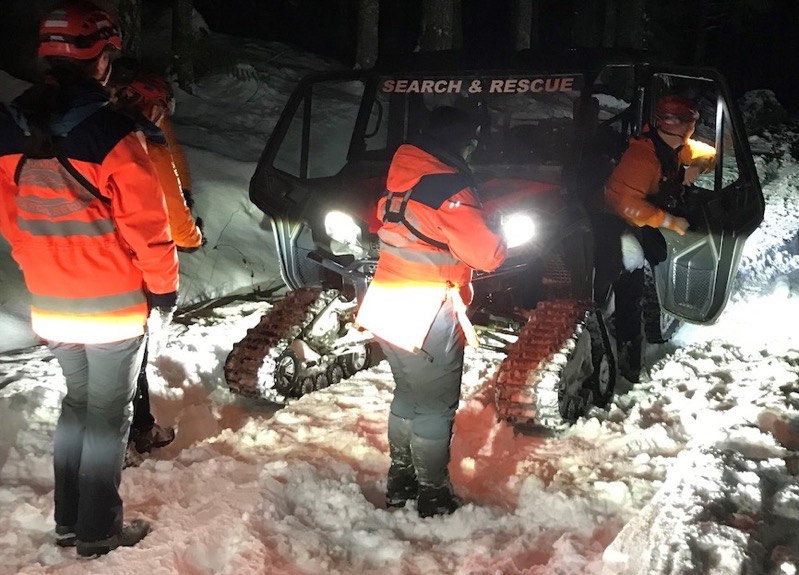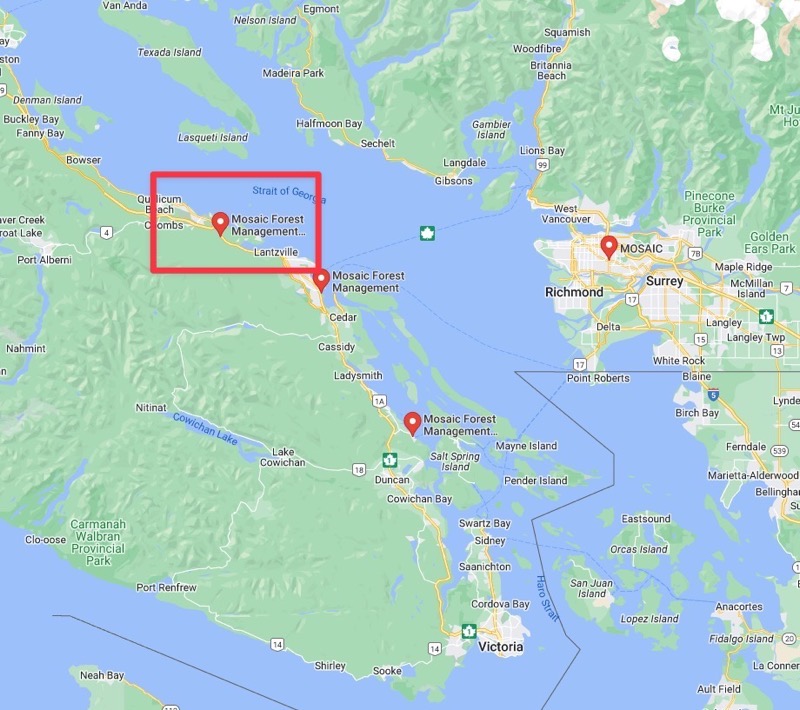
Automatic iPhone SOS Saves B.C. Men in Backcountry Crash

Apple’s iPhone and its satellite-linked emergency alert system played a crucial role in rescuing two men after their SUV veered off a logging road and plunged down an embankment in deep snow near Nanoose Bay on Wednesday night, on Vancouver Island in B.C.
Unknown to the men, their iPhone had automatically sent out an emergency signal with precise location coordinates. Rescuers were able to get to them in just over an hour. Talk about thanking your lucky stars.
The Crash Detection feature is available in iPhone 14 and later models, including compatible Apple Watches. It’s designed to automatically connect users to emergency services following a significant car accident, even in situations where the user might be unresponsive.
This feature is particularly crucial in areas beyond the reach of cellular and Wi-Fi networks. In such scenarios, the iPhone’s Emergency SOS via satellite system becomes active, providing a vital link to emergency services. The technology is designed to work seamlessly, ensuring that help can be summoned even in remote locations. This was the case in Mosaic’s Northwest Bay Division.
In instances where the crash victims are capable of responding, they have the option to swipe the Emergency Call slider on their device’s screen. This action directly connects them to emergency responders, allowing for immediate communication.
However, the true innovation of this technology lies in its response to situations where the user is unresponsive. If there’s no cancellation or initiation of a call within 10 seconds of the alert, the iPhone begins a secondary 10-second countdown. During this period, the device emits loud sounds and produces aggressive vibrations or taps to capture the user’s attention. If the user remains unresponsive after this countdown, the device automatically places a call to emergency services.

Image: Arrowsmith Search and Rescue
During the automatic call to emergency services, the device plays a pre-recorded message that informs the responders that a severe car crash has been detected and the user is unresponsive. It also provides the estimated latitude and longitude coordinates of the crash site, including a search radius.
This message is played in the primary language of the user’s location and repeats at five-second intervals. After the initial message, the volume is reduced to allow anyone nearby, or the user themselves, to communicate with emergency responders if possible. The user also has the option to stop the recorded message, providing flexibility in different emergency scenarios, according to Apple.
“The phone’s satellite-linked emergency alert system fired off latitude and longitude coordinates of the accident scene, allowing searchers to get there in a little more than an hour,” said Nick Rivers, President of the Qualicum Beach-based Arrowsmith Search and Rescue and a search manager, speaking to the Times Colonist.
“Without the technology, the two men would have faced a long, challenging walk out if they could have made it. But my guess is they would have succumbed to hypothermia before getting out,” said Rivers.
Rivers was impressed with Apple’s Crash Detection feature and the ability to leverage satellites to communicate with search and rescue teams, as no cell coverage was in the area. “Having the ability for people to send a message, or for it to automatically do it when there is no cell service, is definitely a massive safety improvement for backcountry users.”
The men would have been facing a 10km walk in -3C temperatures through tough terrain. Their SUV had rolled on its side and there was no cell signal in the area.

The rescue operation was initiated after Oceanside RCMP was notified by Apple through the Crash Detection feature. A team of 17 search and rescue volunteers, including an RCMP drone equipped with heat sensors, responded to the call. The drone images revealed a vehicle and what appeared to be two people. The rescue team used a specially equipped side-by-side vehicle to navigate through the snow and reach the accident site.
Upon arrival, the searchers found one man had climbed up the embankment, while the other was in the process of doing so. Both men, who sustained minor injuries, were safely escorted out of the woods and received medical attention.
This incident marks the first time the Arrowsmith search and rescue group responded to an automatic satellite connection with a cellphone, although similar instances have occurred elsewhere in the province. Rivers acknowledged some false activations with this technology but maintained, “It’s a great piece of tech to carry in a pocket that can absolutely save your life without knowing it.”
iPhone 14 series models and newer, along with some Apple Watch models and Google Pixel phones, feature crash detection capabilities. Back in November, Apple gave an extra free year of Satellite SOS to iPhone 14 users. The feature was supposed to be free only for one year.
Globalstar, Apple’s satellite partner, will soon hire Elon Musk’s SpaceX to launch more satellites to support the feature.
Non-profit Arrowsmith Search and Rescue are also fundraising right now for a second side-by-side rescue vehicle, which costs roughly $30,000—click here to donate to the cause.
Thanks John

